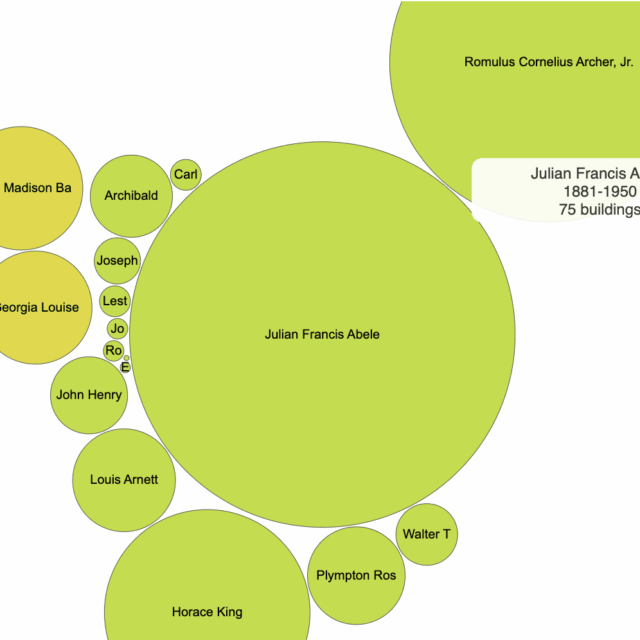Partially supported by a NULab Seedling Grant.
The Black Architects Archive (BAA) is a web-based, interactive repository of architectural practice that maps the genealogy of black architects from the nineteenth century to the present.
The archive collects and displays the work of black architects across history in an effort to bring to light under-represented practitioners in architecture. By foregrounding architects who have otherwise been overlooked in history, the archive aims to open the lives and works of these architects to greater scholarly inquiry. Thus BAA stands to be an important tool for public use, academic research, and teaching by expanding public knowledge of architectural practice, influencing the kinds of research that are done in architectural history, and thus, by extension, contributing to making the curricula within architectural education more diverse and inclusive.
BAA builds upon exploratory work conducted in an earlier project done in partnership with the Society of Architectural Historians (SAH), who sought a more dynamic and intuitive interface for their database of notable Chicago architects. After building an interactive database for the SAH that included more than 1,800 Chicago architects practicing across the nineteenth and twentieth centuries, we realized that this interactive digital format could allow us to do much more than simply see where architects worked and what buildings they designed. Rather than continue mapping notable Chicago architects, the potential of the format to surface the histories of under-represented architects became apparent and the decision was made to refocus the project on the work of black architects.
BAA will be an entirely digital collection accessed through a publicly-available web-based application. In addition to serving qualitative information about a range of black architects across history, the aim of BAA is to meld the archival display of historical information with new computational and digital mapping technologies that will allow humanities researchers to easily conduct quantitative analyses of qualitative information. Thus, one of the main methodological challenges of BAA concerns how to make architectural history a digital public history when architectural history has traditionally relied on buildings themselves as the primary source of inquiry for understanding and analyzing the built environment. While photos of buildings have frequently been used online as descriptive markers of buildings, we aim instead to quantify building information through associated digitized data about buildings in order to allow for computational analysis of the historical built environment.
In 2020, for his continuing work on BAA, Cephas received a grant from the Graham Foundation for Advanced Studies in the Fine Arts, and a Summer Support Grant from the College of Arts, Media and Design (CAMD).
Principal Investigator
J. Cephas, Faculty, Architecture



